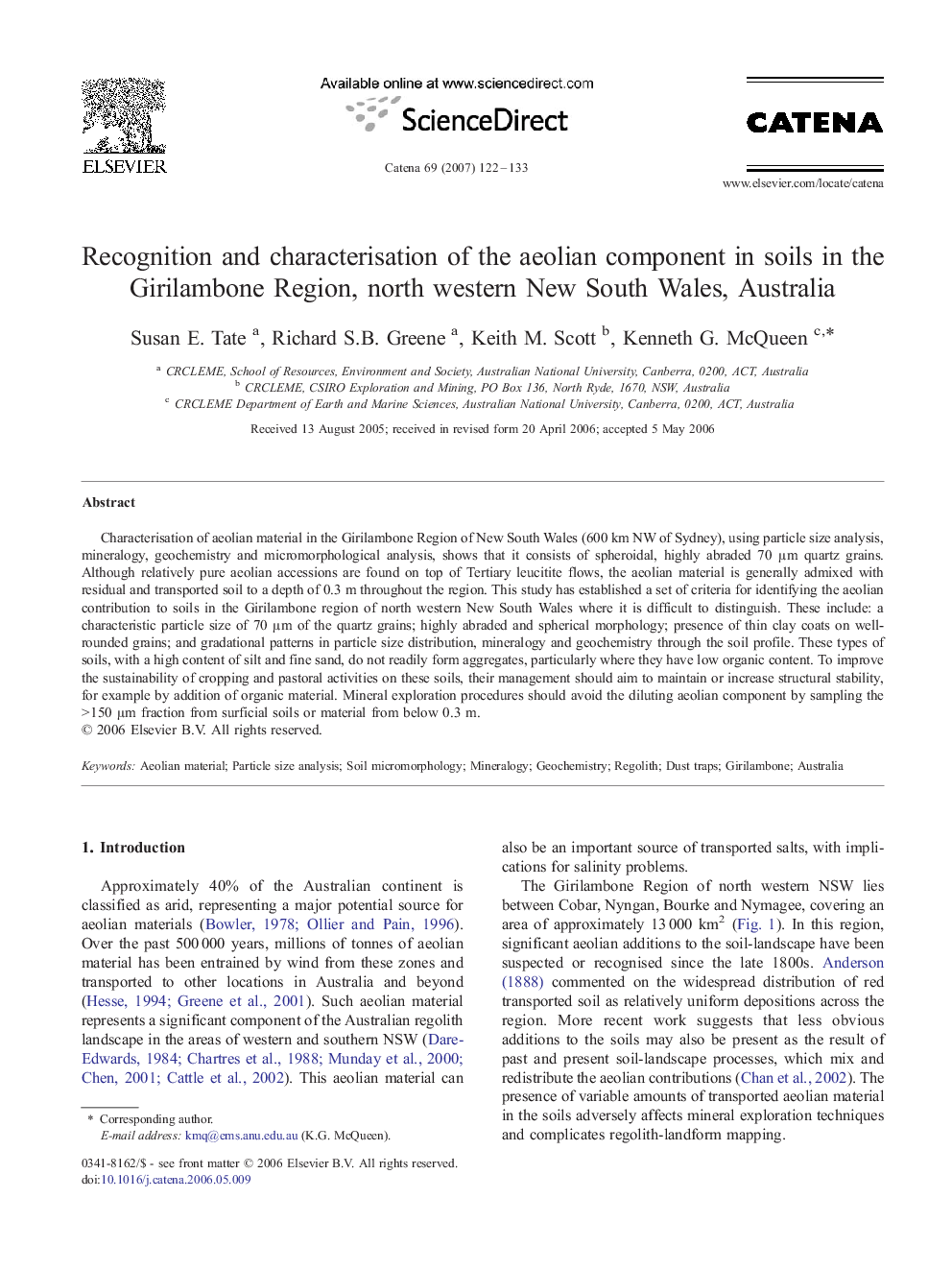| Article ID | Journal | Published Year | Pages | File Type |
|---|---|---|---|---|
| 4572678 | CATENA | 2007 | 12 Pages |
Characterisation of aeolian material in the Girilambone Region of New South Wales (600 km NW of Sydney), using particle size analysis, mineralogy, geochemistry and micromorphological analysis, shows that it consists of spheroidal, highly abraded 70 μm quartz grains. Although relatively pure aeolian accessions are found on top of Tertiary leucitite flows, the aeolian material is generally admixed with residual and transported soil to a depth of 0.3 m throughout the region. This study has established a set of criteria for identifying the aeolian contribution to soils in the Girilambone region of north western New South Wales where it is difficult to distinguish. These include: a characteristic particle size of 70 μm of the quartz grains; highly abraded and spherical morphology; presence of thin clay coats on well-rounded grains; and gradational patterns in particle size distribution, mineralogy and geochemistry through the soil profile. These types of soils, with a high content of silt and fine sand, do not readily form aggregates, particularly where they have low organic content. To improve the sustainability of cropping and pastoral activities on these soils, their management should aim to maintain or increase structural stability, for example by addition of organic material. Mineral exploration procedures should avoid the diluting aeolian component by sampling the > 150 μm fraction from surficial soils or material from below 0.3 m.
